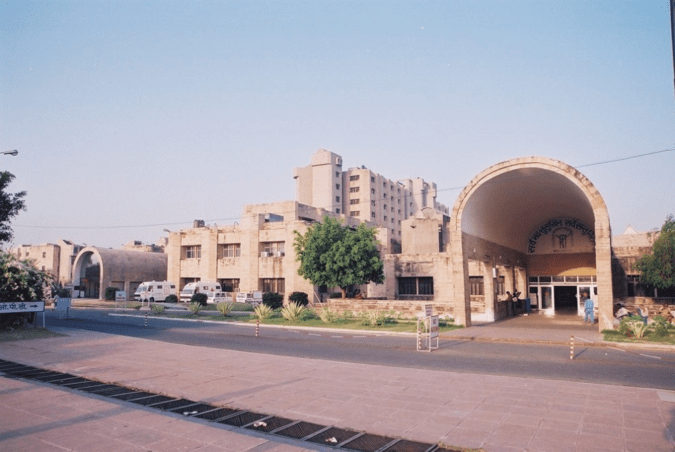
Providing healthcare in an entirely new dimension
The Sanjay Gandhi Postgraduate Institute of Medical Sciences (SGPIMS) at Lucknow, Uttar Pradesh, India is an autonomous state academic medical institute involved in super-speciality healthcare delivery, education and training of specialists and advanced biomedical research.
It is the first public-funded medical institute in India to invest in research and development in Healthcare IT. The advent of NKN, India’s national research and education network, has provided the Institute with the much-needed boost in bandwidth to convert its plan for ICT-enabled healthcare to practical reality.
The Institute is a national leader in telemedicine, e-health and allied technologies. Over the last 15 years, several telemedicine activities have taken place, ranging from infrastructure development for education, research, training and application to the development of a full-scale programme.
The SGPIMS telemedicine team has also acquired knowledge and skill to support various national programmes as well as meet the needs of international agencies in designing and implementing telemedicine projects in developing countries.
Underpinned by the network
The NKN 1 gigabit per second (Gbps) bandwidth was integrated with the existing 10Gbps Hospital Information Management System (HIMS) network. Different departments of the hospital were linked with a video bridge at the network operations centre (NoC) of the national resource centre located at the Institute’s School of Telemedicine & Biomedical Informatics.
All the telemedicine video end points, either fixed (20 at present) or mobile video kiosks (as per demand) are controlled at the NoC on a prescheduled basis. This system enables any HIMS node to be made a video point at any time using the mobile kiosk. This plan is facilitating a model for the National Medical College Network.
Surgical Telepresence for professional skill development
Adoption of high-speed bandwidth helps bring surgical tele-presence technology to the hospital environment. Tele-presence allows online collaboration with remote learners using live data such as surgical video and audio in real time. Surgical tele-presence has multiple options ranging from real-time collaboration and streaming to archiving the live data for later processing of content development. Surgical skills are shared with remote partners as well as local viewers using IP technology. Simultaneous archival of surgical proceedings is done centrally.
Integrated digital hi-tech lecture theatre
The integrated lecture theatre was designed in the year 2007 with a vision to share live Continuing Medical Education or conduct workshop with remote academic medical institutions. The NKN bandwidth has enhanced the Institute’s capacity to extend the benefit of knowledge transfer to a number of remote institutions in multi-point video conference mode.
This has enabled the environment to create a virtual world of e-learning, content creation, storage and B4M Production Suite interlinked with other knowledge capture resources such as digital operation theatre, tele-medicine enabled video conferencing suites and seminar rooms of the various departments.
SGPGI Knowledge and Healthcare Delivery Network
Utilizing the NKN bandwidth, WiFi zones have been created in the wards wherein doctors on duty can access knowledge content stored in the Institute’s knowledge park or access live data on surgery /interventional procedure on their desktops/mobile computing tools/smart phones. The surgical residents access live surgery interactive sessions at the Digital OT while working in the wards or OPD.
National Medical College Network
The Ministry of Health & Family Welfare, Government of India has decided to setup telemedicine infrastructure in all government-run medical colleges and networking them with each other in a phased manner as a green-field under the centre scheme for e-health, including telemedicine. The network will be based on the NKN.
The Sanjay Gandhi Postgraduate Institute of Medical Sciences has been identified as the national resource centre. The objective of the project will be facilitate tele-education, tele-CME, sharing of surgical and interventional skill, access to digital library, etc. for medical and paramedical professional by setting up modern information and communication technology-enabled e-infrastructure in all government-run medical colleges of the Country. The network will be supported by a high-speed IP network to be provided under the National Knowledge Network scheme of the Government of India.
Developing e-health technologies with public health needs in mind
The Sanjay Gandhi Postgraduate Institute of Medical Sciences has been involved with the research and development in the domain of telemedicine, e-health and allied technologies with the support of various scientific agencies, state and central governments. Though the thrust is on e-learning, being an academic institution, many of the projects have been undertaken keeping public health needs in mind.
Our technology mission is to design and develop low-cost high-quality products for application in low and middle –income countries providing healthcare access at the door step of each villager, creating quality knowledge resource and enabling access to one and all ubiquitously.
Benefits of integrating NKN in hospital environment
An enterprise hospital-wide telemedicine network can piggyback on the HIS network which is being built for 10G capacity. The overall capital and operational investment can be minimized if the same network is utilized for accessing patient data and telemedicine. Seamless activity can be carried out simultaneously from multiple points of the hospital if the network backbone of the hospital is on fibre.
The high-speed network NKN bandwidth can be shared more efficiently amongst all hospital doctors. Doctors can provide their services from their respective offices or OPD chambers instead of coming to the telemedicine centre, with the help of mhealth and IP videoconferencing solution. Hospital data stored in the HIS data centre can be archived for telemedicine purposes.
For more information please contact our contributor(s):

